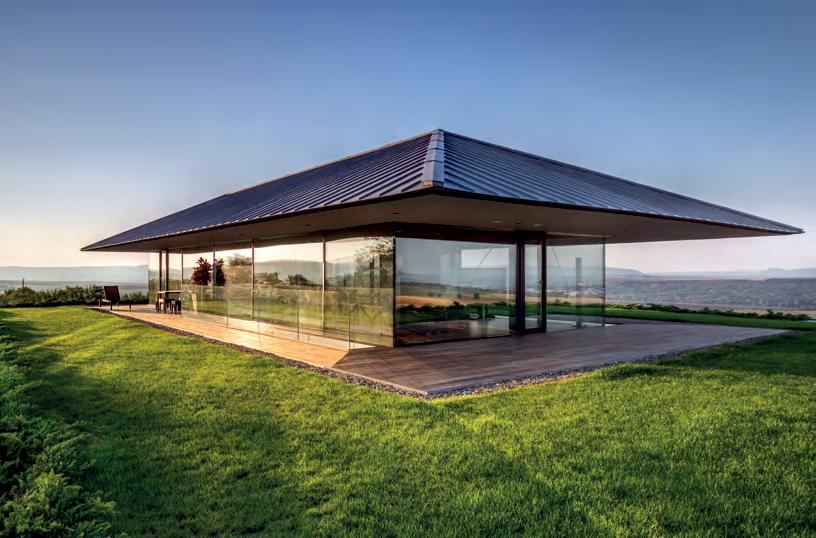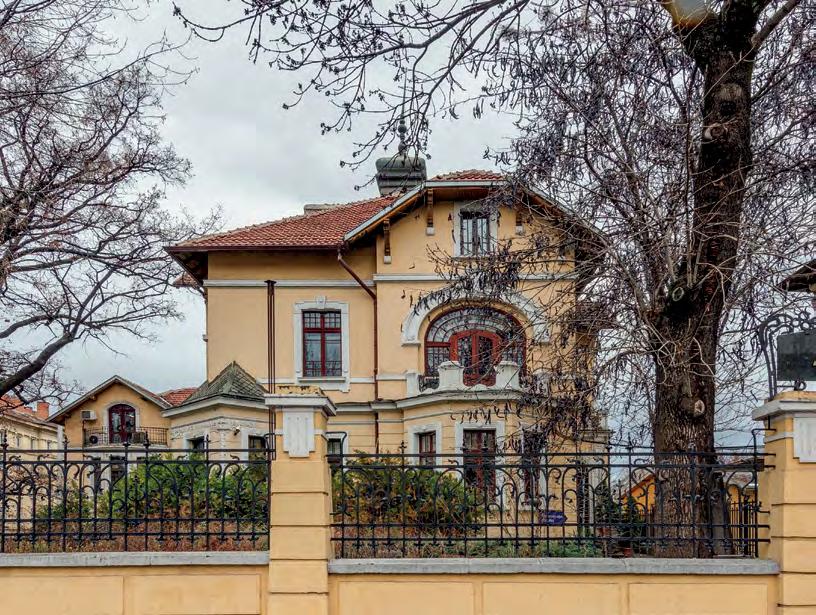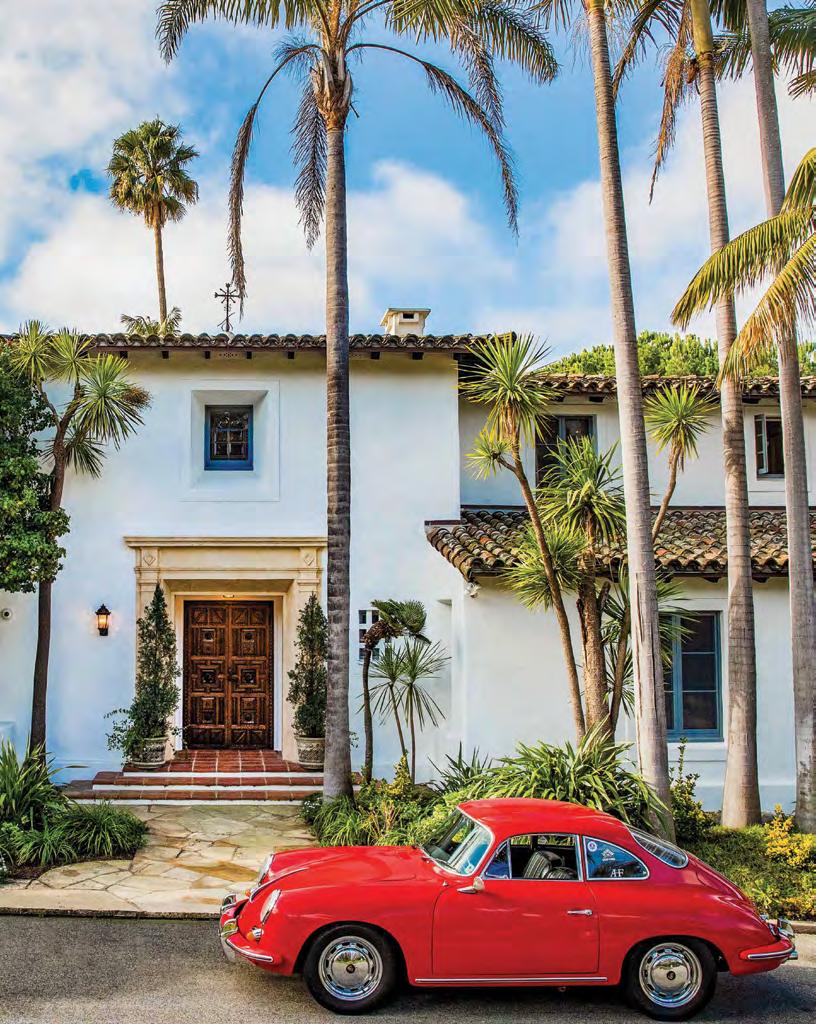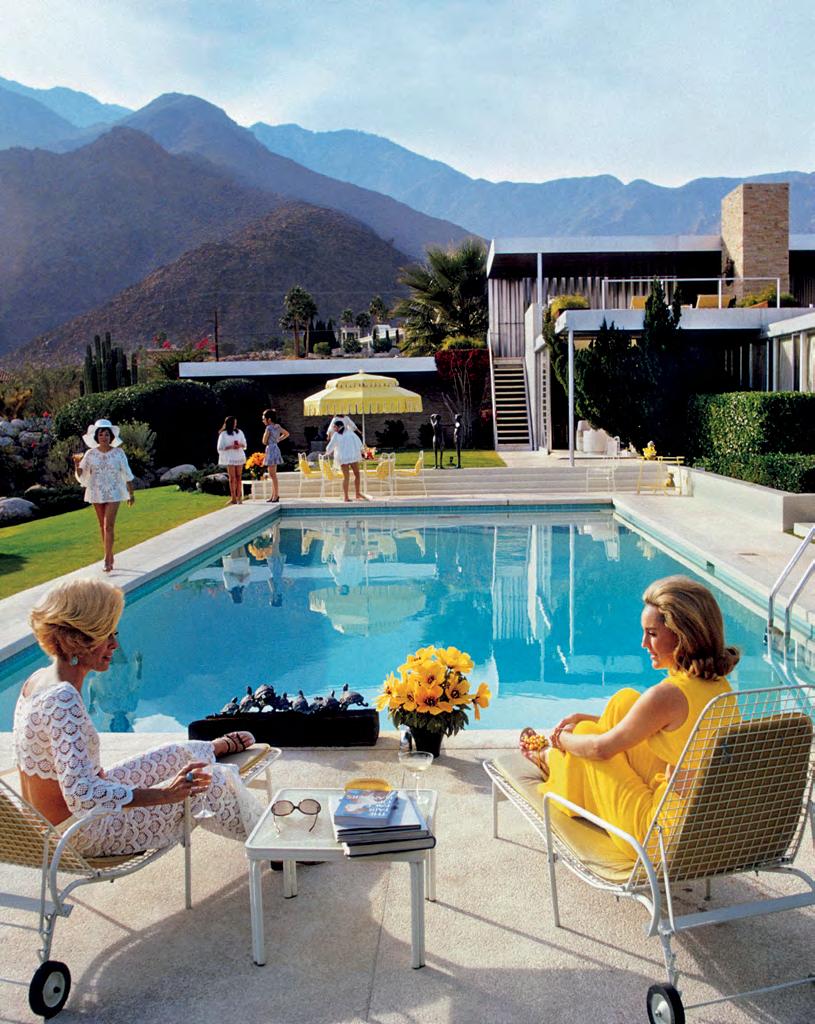
17 minute read
UNIQUE ESTATES A GOOD YEAR
снимки Георги Казаков
Advertisement
По традиция в началото на всяка година екипът на Unique Estates празнува постиженията си с тържествена церемония по награждаване на най-добрите. 2020 беше различна и предизвикателна. Светът се промени и ние успяхме ефективно да се адаптираме към новата реалност, така че да запазим лидерската си позиция. „Справихме се, защото взехме бързи и адекватни решения, променихме начина си на работа. Бяхме на първа линия и успяхме заедно“, с тези думи управляващият партньор Весела Илиева поздрави всички на галаспектакъла в City Mark Art Center, на който компанията представи резултатите за 2020 година.

НАЙ-ДОБРИТЕ ПРЕЗ 2020:
Наградата за принос в развитието на компанията през последните 5 години „Устойчиво развитие на компания“ Светослава Георгиева, Оперативен директор
Консултант с най-голям оборот Даниела Тонова (старши консултант)
Консултант с най-голям оборот наеми Елиза Петрова (консултант)
Консултант с най-голям брой сделки Бистра Георгакиева (консултант)
Сделка на 2020 за продажби Илонка Стоянова (партньор) и Галина Грудова (старши партньор)
Сделка на годината за наеми на бизнес имот Анна Тонова (старши консултант) и Галина Грудова (старши партньор)
Сделка на годината за наеми на жилищен имот Евелина Костакева (старши консултант и мениджър екип) и Славина Йолова (консултант)
Най-успешни консултанти, работа с инвеститори Марина Людмилова (старши консултант), Николай Ставрев (консултант) и Албена Зафирова (консултант)
Партньор/Мениджър на екип Галина Грудова (старши партньор)
Мениджър на 2020 Галина Грудова, Илонка Стоянова, Евелина Костакева, Красимира Николова, Зара Котева и Емилия Димитрова
Най-успешен екип Екип с мениджър Галина Грудова: Теодора Биволарска (партньор), Даниела Тонова (старши консултант), Рени Цоловска (старши консултант), Мариана Тальокова (старши консултант), Бистра Георгакиева (консултант), Емануела Башева (консултант), Десислава Илиева (консултант)
Административен служител на годината Виолина Станкова (юрисконсулт)





EnglishText
CAMPS BAY, CAPE TOWN, SOUTH AFRICA | R34,900,000 | Web ID: IUGR88 SOFIA, BULGARIA | € 1 750 000 | REF. ID 6070

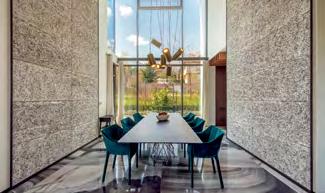
12
Market Trend CHANGES: SECOND HOME MARKETS
We are used to looking for a home close to the office, and only stay in extra-urban properties for a few weeks while on leave. Last year brought a distinct shift to these traditional attitudes and emphasised the idea of a ‘second home’. Surveys of our own and of foreign luxury property markets show an increased interest in homes in what was considered holiday or seasonal destinations until recently. The health crisis caused by the spreading of COVID-19 led to an elevated demand in seaside and mountain resorts, as well as for apartments and houses beyond the boundaries of major cities. The data also shows an overall rise in transaction volume in the residential property market, where the decline during the first lockdown in the spring of 2020 was followed by a strong recovery of demand and transaction volume over the coming months. The big changes came with the new lifestyle, triggered by the two lockdowns and the transition to working from home. Convenient travel to the office was replaced by the need for more personal space, working space and amenities at home. The emphasis on adopting a healthier lifestyle also had an impact and many buyers turned their attention to areas offering more affordable conditions for sports and outdoor activities in nature. ‘In recent months many people were left with the sensation of literally being prisoners in their homes. This made them rethink their lifestyle and their attitude to the concept of home,’ Svetoslava Georgieva, Chief Operations Officer of the luxury properties company Unique Estates, stated. This resulted in changes in the attitude to extra-urban areas – from places where you are looking for a home for the weekend and the summer months, into places of lasting interest or longerterm occupancy. ‘Generally speaking, the concept of a ‘second home’ refers to a vacation house or apartment that you use during the summer or winter months but only spend no more than 30% of the year there. Now this market has transformed, particularly with regard to well managed villages and satellite small towns around Sofia,’ Svetoslava Georgieva added. Unique Estates targets areas such as Bankya, Vladaya, German, Lozen, as well as Elin Pelin and the surrounding villa areas and villages around it east of Sofia. They offer easy access and established transport links to the major city but at the same time provide additional benefits, such as mineral water, proximity to a mountain or a forest, clean air… The demand is focussed mostly on detached houses with a large yard, but there are also quite a few buyers preferring properties in gated complexes with security and maintenance. According to Unique Estates’ consultants, in many cases buyers are also looking for a combination of a suburban house and an apartment in the city, to be used depending on their needs and business commitments. A survey conducted by Luxury Portfolio International in six of the most popular destinations for the purchase of a ‘second home’ globally is showing a rise in the interest of increasingly younger buyers. In many cases they are not on the market for a vacation property, but rather for a permanent residence. The conclusion is that working from home in many cases results in a shift of priorities – from proximity to the office to a property that is more in line with the lifestyle of its occupant. Similar trends are witnessed in the Bulgarian market. The attention of the millennial generation is increasingly drawn to suburban areas. The reasons are similar to the ones presented above. A number of surveys emphasise the fact that younger buyers prioritise the balance between work and personal life and that is reflected in their choice of home. On a global level, some of the most coveted amenities related to the purchase of a home are: a pool, personal training space and a home office. Buyers are also keen on opportunities to charge an electric car or a Tesla, as well as ‘smart’ security and facility management systems. In the Bulgarian market the picture is a little bit different, partly because of the limited supply of suburban properties with the listed amenities. Personal space is of particular importance, i.e. the presence of a yard and more working space, entertainment space and relaxation space at home are essential traits. Energy efficiency also remains an important criterion, and people are looking for homes with energy-saving solutions for heating and cooling, catchments, irrigation systems… Modern architecture and materials utilised are also important for buyers in the luxury segment. Overall, with the growth of the luxury property market, more and more detached properties and complexes are being offered in suburban areas. This is a trend that is sure to impact buyers’ attitudes in the future.
EnglishText
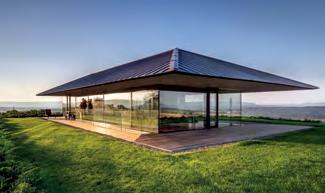
24
Talks ARCHITECTURE, NATURE AND LUXURY
Establishing harmony between them is the most vital trend. It invites nature in the home in order to make the occupant feel great. The more thoroughly and ephemerally the boundaries are blurred inside and out, the more luxurious the inspired experience. There is no doubt that the architects we are interacting with today are successfully achieving this effect.
Vyara Zhelyazkova and Georgi Katov, I/O Architects, www.ioarchitects.com
What are the most persistent clichés and prejudices that you need to overcome when it comes to an assignment for a ‘house with a yard’ and ‘a house in nature’? For instance, that large showcases are not an issue but rather a modern achievement; that it is better to devote a large portion of the budget toward appropriate solutions aimed at minimising the construction and for hidden intelligent systems providing maximum comfort of living, rather than into ostentatiously expensive furniture; that it makes a difference whether the materials are natural or imitations of natural ones; that there is nothing better than the original. And, most of all, that the investment in a good architect is the most important thing for the end result. What are the most interesting and effective ways to invite nature within a given space? I remember an interesting project for a client who had made an emotional purchase of a small house from the 30s with an even smaller yard in Sofia’s centre. His occupancy plans were impossible in this situation, and furthermore it was impossible to upgrade or rebuild. We left the house as it was and instead decided to build underneath. The small dimensions of the yard allowed us to reconstruct it on top of a mobile platform and so the yard was moving down when you are downstairs at the bedroom level, and during the day it went up to the level of the living area. The interesting thing was that this whole facility, which we created in cooperation with a mechanical engineer, turned out to be no more expensive than a ‘luxury’ elevator. In this case the connection with the external environment to some extent can be called ‘justified luxury’. In another project we used the space of a house’s staircase in order to create a periscope effect toward the garage at the underground level via a system of mirrors, so that the space of the living room upstairs would be reflected all the way down and ‘enter’ the garage. (Eclipse House) In Observation House once again we mounted a glazed 360-degree living room on top of a modern mastaba, so that when you are indoors the presence of the lavender and sunflower fields around the house envelops you completely. The loss of security and the search for an asylum and an identity (resulting from the pandemic) – has it impacted architecture already? Is the expectation for the connection between the exterior and the interior already undergoing transformation? For the time being we are witnessing how the investment in personal space is becoming of higher and higher priority. Contrary to previous rules, saying that the location is the most important thing, it seems that nowadays the quality of the actual living environment is coming to the forefront, and so is the connection with nature and the opportunities for transformation.
Rado Iliev, www.archilovers.com/rado-iliev-iliev
What are the most persistent clichés and prejudices that you need to provoke and overcome when it comes to an assignment for a ‘house with a yard’ and ‘a house in nature’? Usually mentions of styles and things observed elsewhere that could not work at the specific location and in the specific project. I design each house for the specific location where it will be constructed. That is what informs the design. What are the most interesting and effective ways to invite nature within a given space? In my house in London I loved seeing leaves from the garden on the living room floor, which had a door to it. They came in uninvited but I enjoyed them a lot. The projects Madeira, Willows House, Villa DO, House in Streatham, Bromley Garden House and my last project here in Bulgaria incorporate large opening and fixed glazed surfaces overlooking greenery and nature. They were adjusted for these sights and that’s what determined their design. The loss of security and the search for an asylum and an identity (resulting from the pandemic) – has it impacted architecture already? Is the expectation for the connection between the exterior and the interior already undergoing transformation? Office design is already being reimagined. For a long time office design has strived toward more environmentally friendly lifestyles, more united and social working spaces, but the pandemic brought some new criteria as well. Open spaces were a revolution in office design but that will obviously change. The office is already a part of all assignments for apartments and houses.
Magdalena Matanova and Hristo Hadzhiganchev, MMXX architects, mmxxarchitects.com
What are the most persistent clichés and prejudices that you need to overcome when it comes to an assignment for a ‘house with a yard’ and ‘a house in nature’? There are so many parameters of buildings among nature that the difficult part is to step back and
EnglishText
have a fresh look in order to avoid repeating the same old shapes. What are the most interesting and effective ways to invite nature within a given space? Through the senses, mostly sight, hearing, touch. The rest is a formality. The loss of security and the search for an asylum and an identity (resulting from the pandemic) – has it impacted architecture already? Is the expectation for the connection between the exterior and the interior already undergoing transformation? Of course, it is impossible to have no impact. At the same time, it will not start from our latitude. This is a process that will first affect public spaces and their role for the public way of life, and we are not yet fully adjusted to the proper organisation of this city environment. We are going to feel it later on as an already established trend. We are already witnessing how life on the street is flourishing. The desire of more people to have their own place or house close to nature is felt quite distinctly. You could read the whole feature on www.ues.bg/en/blog

34
NOTABLE OWNERS
A home says a lot about a person, and celebrities are no exception — it is always fascinating to see how their abodes match up with their public personas. This edition of Notable Owners provides glimpses into the former and current homes of legendary musical artists, a popular athlete, and more.
Derek Jeter’s Waterfront Mansion Tampa, Florida, USA | $29,000,000 Considering its spacious size, luxurious amenities, and unbeatable privacy, Derek Jeter’s trophy home in Tampa, Florida is the epitome of celebrity lifestyle. The mansion offers 30,000 sq. ft. of living space — 9,000 sq. ft. of which are outdoors. Found in the exterior is an outdoor kitchen, heated spa, 80-foot saltwater lap pool, and dock with two boat lifts. Remarkable amenities follow inside, including, most notably, a clubroom with a full-service bar, billiards and game table, sitting area, and glass corner wall that opens to the outdoors. Jeter knew the home would draw attention, and, accordingly, installed a 6-foot-high wall surrounding the edge of the home — a rarity as it is 2 feet taller than what is ordinarily allowed by local law. John Lennon’s Former Residence New York, New York, USA | $5,500,000 This former residence of John Lennon’s is steeped in musical history. For one, he famously named his residency there “The Lost Weekend,” as he lived there with his girlfriend May Pang while estranged from wife Yoko Ono. Beyond that, it’s the site of Andy Warhol’s iconic “New York City” photos of Lennon, featured in Interview magazine in 1974. The 4,000 sq. ft. penthouse sits atop the exclusive Southgate in New York, New York and overlooks the East River pouring into the New York Harbor. It also features a 2,000 sq. ft. wraparound terrace that’s accessible from every room on the main floor, as well as an elegant staircase with wroughtiron banisters and a library/media room. You could read the whole feature on www.ues.bg/en/blog
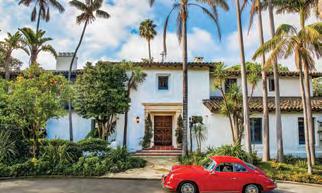
38
A SANTA BARBARA ESTATE FROM CALIFORNIA’S GOLDEN AGE
It’s easy to understand how Santa Barbara’s exclusive Riviera neighborhood got its name. Perched on a hillside just above the city’s picturesque downtown area, where views of red-tile roofs give way to the Pacific Ocean and the Channel Islands beyond, one would be forgiven for mistaking this lush locale for the Mediterranean Coast. Of course, upon closer inspection, the ubiquitous Spanish Colonial Revival architecture and coastal-cool aesthetic make it abundantly clear that this is a rare remaining slice of California’s Golden Age. In fact, the lasting legacy of Reginald Johnson, one of the premier architects behind this distinct vernacular, can still be seen throughout the city today, from the Santa Barbara Post Office to the iconic Biltmore Hotel (now owned and operated as the Four Seasons Biltmore). Yet there’s perhaps no greater example than the immaculately maintained Cuatro Vientos, a glamorous Spanish Colonial Revival residence located right in the Riviera. Built in 1929, the property makes an enchanting first impression as one winds passed idyllic gardens, originally designed by noted landscape architect Ralph Stevens, and toward an auto circle that leads to the front entrance, flanked by towering palm trees and wooden balconies on either side. While the breathtaking façade makes it apparent that this a work of supreme architectural significance, it only hints at the splendor that’s to come inside. You could read the whole feature on www.ues.bg/en/blog
EnglishText
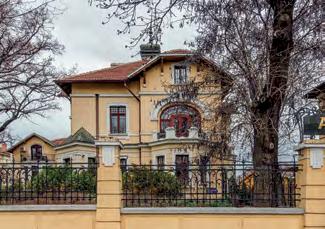
REF ID: 14741
44
Evergreen ADOLF FUNK’S HOUSE
Standing out as one of the most beautiful and emblematic properties representing Sofia’s old architecture, Adolf Funk’s house is situated in the beating heart of the city, dignified and poetic, having experienced a lot of history over the years. Now it is a rental property. It is considered to be the first secession-style building in Sofia. Built in 1904 for the private gynaecological clinic of the Austrian doctor Adolf Funk by the architects Kiro Marichkov and Georgi Fingov, whose erudition, talent and taste created the elite outlook of our capital city. After its completion in 1904, it turned into a real sensation, with Sofia’s residents enjoying walks to the ‘beautiful house of Dr. Funk’ to admire it (at the time the house was located in the outskirts of the city, among a sea of natural greenery). After his return to Austria, Dr. Funk sold the house to Spas Tyufekchiev. He, in turn, rented it out to Atanas Burov, and in 1927 his son, Alexander Tyufekchiev, gambled it away. The obstetrician-gynaecologist Boris Trichkov bought the house for 2 million leva. Driven by his devotion to the profession, he once again converted it into a gynaecological clinic, modernised it and equipped it with modern medical equipment imported from Vienna. Later on the house was nationalised, and in 1991 – restituted and returned to Dr. Trichkov’s three daughters. They are taking care of the precious architectural jewel and enabling it to continue to live fully and bestow its image to the prestige of iconic companies and institutions. Today the two buildings of the property are surrounded by a beautifully arranged gated garden with pathways. A large parking lot for about 40 vehicles has been set up behind the buildings. The interior of the main building is on two levels and additional attic space, containing a total of fifteen working rooms and five bathrooms. The second building offers seven working rooms and two bathrooms. The property’s aesthetic and emotional wealth, as well as the comfort it provides, makes it one of the priceless islands in the central parts of Sofia.
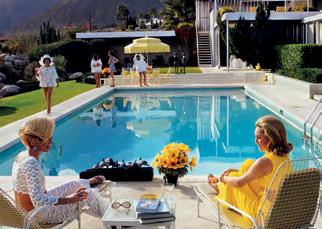
48
NEUTRA’S DESERT HOUSE
The history of the Kaufmann Desert House started in 1946 when the merchant tycoon Edgar Kaufmann commissioned the renowned architect Richard Neutra to design a vacation home for him in Palm Springs. Famous for the department store bearing his name in Pittsburgh, Kaufmann was someone who appreciated superb design. He wanted a house that would dare to stand out against the background of the desert landscape. Neutra was an immaculate choice. Born in Vienna, he was one of the emblematic names of American architectural modernism. He was called ‘the architect who built Palm Springs.’ Thanks to Kaufmann’s vision and Neutra’s talent, the property turned into a real architectural masterpiece and a model for post-war modernism in Palm Springs. You could read the whole feature on www.ues.bg/en/blog
52
UNIQUE ESTATES A GOOD YEAR
Traditionally, at the start of each year Unique Estates’ team celebrates the achievements of its members at an official award ceremony recognising the best performers. 2020 was different and pretty challenging. The world has changed and we managed to adapt successfully to the new reality, and thus keep our leadership position. ‘We did a great job because we made quick and appropriate decisions, and changed the way we worked. We were at the front line and we succeeded together.’ – the managing partner, Vesela Ilieva, addressed everyone present at the gala event at City Mark Art Centre where the company presented the 2020 results.

